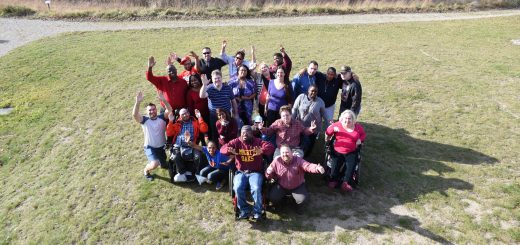The Importance of Structure
When working with people with special needs, it is important to find ways to help them create structure, so they can live safely and happily. This is an important point of focus because many of the ways that individuals without special needs structure their lives are not accessible to people with special needs. For example, a given person without special needs may be able to remember his schedule for they day without an external support. But a person with special needs may be unable to hold the day’s schedule in mind, and become anxious from now knowing what will happen throughout the day. In this case, an external support such as a written or picture schedule can help alleviate these feelings of anxiety.
Structure is by no means limited to scheduling. To speak of structure in the most general sense, the structures of our experience make the world predictable. For example, most people do not worry about whether the sun will rise again tomorrow. They induce from past experience that it will. And people (at least somewhat) intentionally create structure in the form of habits, customs, and worldviews. These hold people together.
People with special needs of different kinds frequently face challenges in finding structure in their lives. A person who relies on a wheelchair for mobility relies on physical infrastructure, such as ramps and accessible elevators, to meet his needs. A person with a cognitive disability may have trouble mapping out the course of her day, and become overwhelmed, just as any person would when faced with a potentially dangerous unknown. And a person with a mental illness (though not necessarily disabled) may have trouble remembering that just because someone is not smiling at them, that they are not necessarily judging the individual. All of these examples center around the idea of the world needing to be a predictable and place in order to be habitable. And they also involve the idea of structure involving order.
However, structure is not limited to order. It also involves creating the mental infrastructure to allow new experiences, which do not necessarily fall within an individual’s view of the world. The experience of personal growth involves some element of unpredictability and chaos. Many or all people feel best when there is a balance between the two. And when supporting people with special needs it is important to bear in mind that as you help to create structure, you are trying to assist the individual in striking this balance. To return to the example of scheduling, you may support an individual by sequencing events, but leave room for the individual to engage in preferred activities. You may also help schedule new experiences which may challenge the individual. But knowing that you will assist as a support and when the experience will occur may provide the necessary structure (order and the infrastructure to facilitate chaos, or new and challenging experiences) to grow.
This post has covered structure and its relationship to working with disabilities in a general and philosophical sense. The ideas of order and chaos as components of growth experiences are derived by the author from Jordan Peterson’s 12 Rules for Life and Maps of Meaning, though they are ideas that occur across time and culture. Our next blog post will cover specific challenges to, and strategies for, helping people with special needs to create structure in their own lives.



